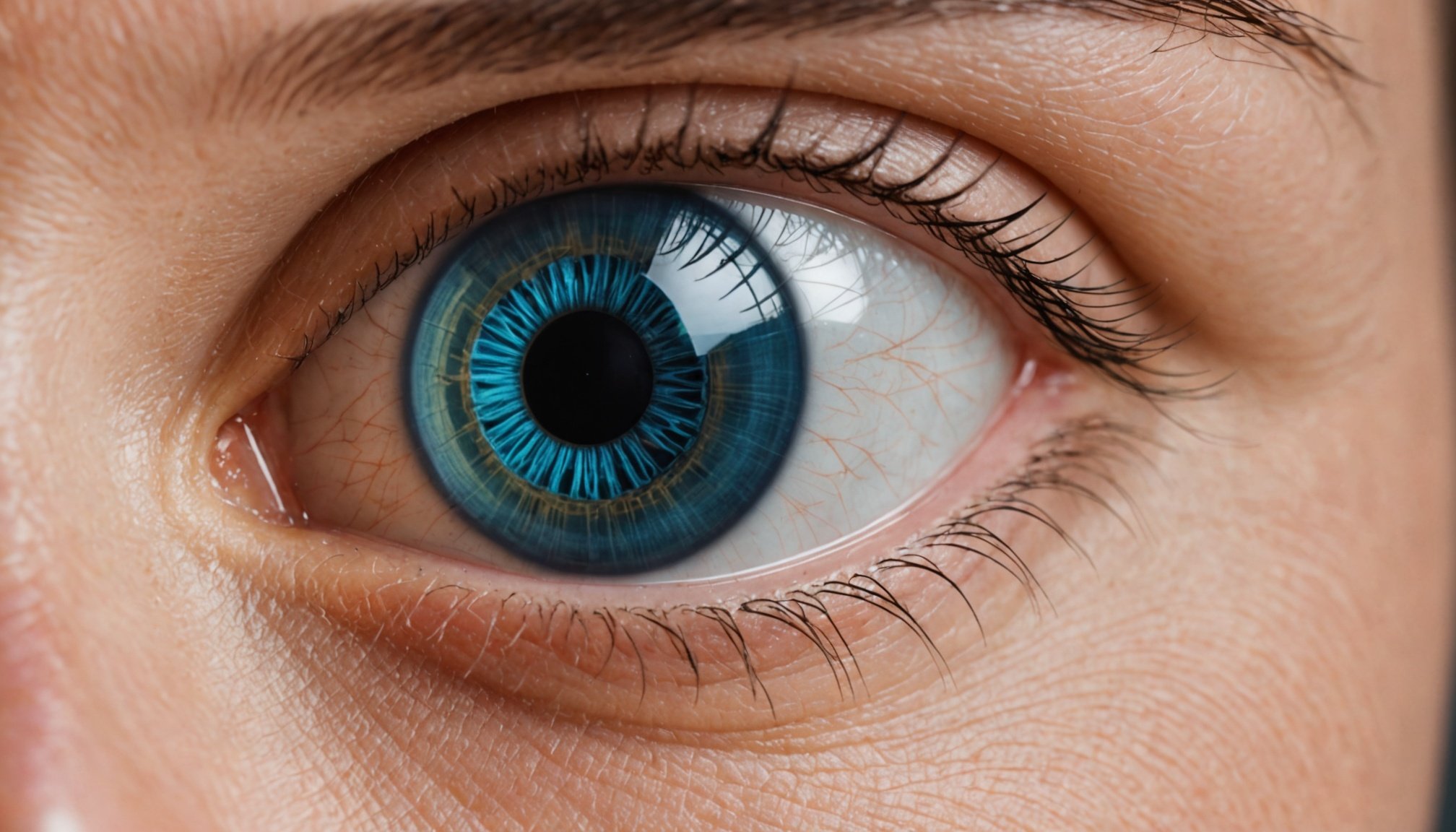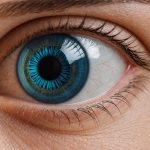Revolutionary Advances in Smart Contact Lenses: Transforming Real-Time Health Monitoring
In the realm of wearable technology, few innovations have the potential to impact our daily lives as profoundly as smart contact lenses. These tiny, yet powerful devices are not just limited to vision correction; they are poised to revolutionize real-time health monitoring, augmented reality, and even how we interact with our environment.
The Evolution of Contact Lenses: From Vision Correction to Smart Technology
Traditional contact lenses have been a staple in vision correction for decades, offering an alternative to glasses for millions of people worldwide. However, the latest generation of contact lenses, often referred to as “smart contact lenses,” goes far beyond mere vision correction. These lenses integrate advanced electronics, sensors, and miniaturized technology to create a multifaceted tool that can monitor health, enhance vision, and provide real-time data.
In the same genre : Unlocking Creativity: How AI is Revolutionizing Music Composition and Sound Engineering
Companies like Mojo Vision and Xpanceo are at the forefront of this technological revolution. Mojo Vision, for instance, is developing smart contact lenses that can project virtual information directly into the user’s field of vision, using micro-LED displays with a pixel density of up to 14,000 ppi. This technology opens up a world of possibilities, from receiving notifications and directions to accessing medical data in real-time[1].
Real-Time Health Monitoring: The Future of Healthcare
One of the most significant advancements in smart contact lenses is their ability to monitor health in real-time. These lenses can be equipped with various sensors that track vital signs and health metrics, making them invaluable tools in healthcare.
Have you seen this : Unlock the fun: why you need a mystery box online today
Glucose Monitoring
For individuals with diabetes, smart contact lenses could revolutionize glucose monitoring. Instead of relying on invasive methods like finger pricking, these lenses can measure glucose levels in the tears, providing continuous and non-invasive monitoring. This technology is particularly promising for managing diabetes more effectively and reducing the risk of complications associated with poor glucose control[4].
Other Health Metrics
Beyond glucose monitoring, smart contact lenses can track a range of health metrics, including heart rate, blood pressure, and even tear biomarkers. These biomarkers can provide insights into various health conditions, such as dry eye syndrome or other ocular diseases. The real-time data collected by these lenses can be transmitted to healthcare providers, enabling more timely and accurate diagnoses and treatments[4].
Augmented Reality and Enhanced Vision
Smart contact lenses are not just about health monitoring; they also have the potential to enhance our vision and interaction with the world around us.
Augmented Reality (AR) and Virtual Reality (VR)
Imagine being able to see directions, messages, or even entertainment content projected directly into your field of vision without the need for additional devices. Smart contact lenses make this possible through advanced AR and VR capabilities. For example, medical staff could read patient data in real-time without looking at a screen, or architects could see their blueprints projected right in front of them[1].
Vision Enhancement
For people with visual impairments, smart contact lenses can be a game-changer. These lenses can use electronic image processing to increase contrast, sharpen edges, and even enlarge text. This technology can help individuals with age-related macular degeneration (AMD), cataracts, or other vision problems to see their surroundings more clearly and maintain their independence[1].
3D Printing and Personalized Contact Lenses
The manufacturing of contact lenses is also undergoing a significant transformation, thanks to 3D printing technology. Startups like Lensy Medical are pioneering the use of 3D printing to create customized contact lenses that offer optimal comfort and adaptation.
Customized Lenses
Traditional contact lenses often follow a “one size fits all” model, which can lead to discomfort and reduced usage. Lensy Medical’s approach uses eye scanners to create bespoke lenses directly in clinics, making custom lenses more accessible and affordable. This technology not only enhances comfort but also paves the way for advanced functionalities like myopia control, drug delivery, and the integration of intelligent components[2].
Advantages of 3D Printing
The use of 3D printing in contact lens manufacturing offers several advantages, including:
- Mass Customization: Overcomes the limitations of traditional manufacturing by allowing for the production of customized lenses on a large scale.
- Reduced Time to Market: Accelerates the pace of innovation by using the same system for prototyping and production.
- Versatility: Enables the production of various types of lenses, including vision correction lenses, myopia control lenses, and drug delivery lenses[2].
Practical Insights and Actionable Advice
As smart contact lenses become more prevalent, here are some practical insights and actionable advice for those considering this technology:
Choosing the Right Lens
When selecting smart contact lenses, consider the following factors:
- Comfort: Look for lenses that are designed for optimal comfort, especially if you plan to wear them for extended periods.
- Functionality: Determine what features are most important to you, whether it’s health monitoring, AR capabilities, or vision enhancement.
- Compatibility: Ensure the lenses are compatible with your specific needs, such as diabetes management or vision correction[1].
Maintenance and Hygiene
To get the most out of your smart contact lenses, proper maintenance and hygiene are crucial:
- Follow Manufacturer Guidelines: Adhere to the cleaning and maintenance instructions provided by the manufacturer.
- Regular Check-Ups: Schedule regular check-ups with your eye care professional to ensure the lenses are fitting properly and not causing any adverse effects[2].
Future Developments and Social Implications
The rapid development of smart contact lenses suggests that these devices could be ready for the market in the near future. Here are some potential future developments and their social implications:
Widespread Adoption
As smart contact lenses become more mainstream, they could fundamentally change how we interact with information and our environment. They could reduce our dependency on other mobile devices and provide a more seamless integration of technology into our daily lives[1].
Emergency and Medical Applications
Smart contact lenses could be particularly useful in emergency situations, such as quick initial medical diagnoses or supporting rescue workers. They could also become an essential tool in modern communication, providing an overview of information while maintaining privacy[1].
Table: Comparison of Traditional and Smart Contact Lenses
| Feature | Traditional Contact Lenses | Smart Contact Lenses |
|---|---|---|
| Vision Correction | Yes | Yes |
| Health Monitoring | No | Yes (e.g., glucose levels, heart rate) |
| Augmented Reality | No | Yes |
| Customization | Limited | High (3D printing) |
| Comfort | Variable | Optimized (custom fit) |
| Functionality | Basic vision correction | Advanced (health metrics, AR, vision enhancement) |
| Technology Integration | None | Advanced electronics, sensors, miniaturized technology |
Quotes from Industry Leaders
- “Smart contact lenses enable users to see and interact with content in a natural way,” – Manufacturer’s statement, highlighting the seamless integration of technology into daily life[1].
- “Our mission is to transform contact lens production by introducing a new manufacturing model: 3D printing directly at the point of care,” – Edan Kening, founder of Lensy Medical, emphasizing the revolutionary impact of 3D printing in contact lens manufacturing[2].
Smart contact lenses represent a significant leap forward in wearable technology, offering a wide range of applications from real-time health monitoring to augmented reality. As these devices continue to evolve, they have the potential to transform various aspects of our lives, from healthcare and sports to education and communication. Whether you are interested in the health benefits, the enhanced vision capabilities, or the futuristic AR features, smart contact lenses are certainly worth keeping an eye on.











